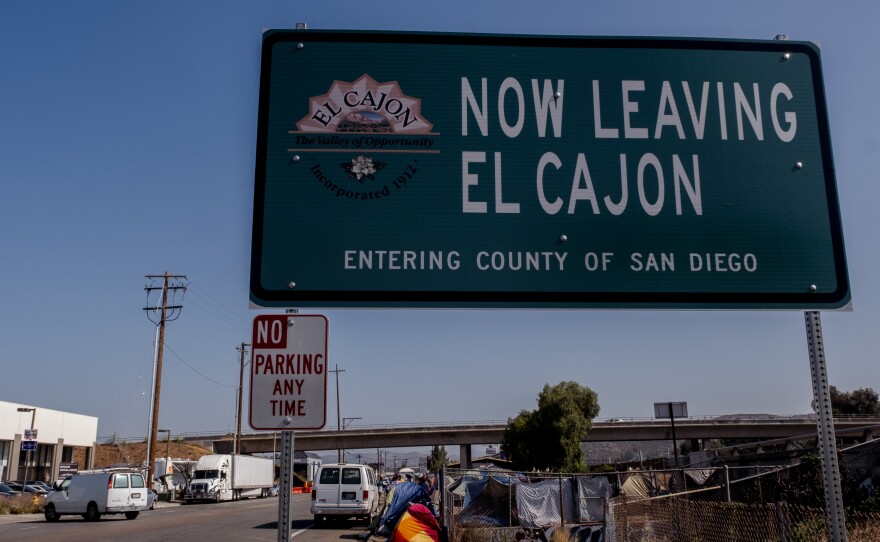San Diego County Supervisor Joel Anderson is proposing a memorandum of understanding between the county and the cities of El Cajon, La Mesa, Lemon Grove and Santee to address homelessness in East County.
Anderson made the announcement Friday while standing in front of a homeless encampment along Magnolia Avenue, which currently sits on unincorporated county property. The camp has been in the area on and off over the past three years, but there is a challenge: It borders multiple jurisdictions, including the unincorporated county and the cities of El Cajon and Santee. And a portion of the camp sits under SR-67, which is state property under CalTrans.
"Homelessness can’t be solved, in my opinion, by the county going it alone, or the city of El Cajon going it alone, or any other city in East County going it alone," Anderson said. "For far too long, we’ve been pushing the homeless down the street instead of the off the street and giving them a chance to leave the street."

In recent weeks, county efforts have resulted in about 60 people finding some type of housing, largely through hotel vouchers. Anderson said working together would take more time, but added that it is a more permanent solution.
"Now, will some people still keep moving? Of course they will," Anderson said. "But, if El Cajon is out here with us, if Santee is out here with us, and we’re a united front, then we’re going to solve it."
At Friday’s news conference, there were some upset business owners and residents complaining about recent alleged crimes stemming from the encampment. The San Diego County Sheriff’s Department said there generally was some crime at encampments, and deputies had made a few arrests here recently relating to outstanding warrants, but the department is not able to tie a lot of crime to people living at the site.
"There are crimes in the area — there are crimes all over the place — but there is no direct relation to this homeless encampment," said Sgt. Colin Hebeler, who oversees investigations in the area.
Anderson’s plan requires buy-in from nearby cities.
Some are asking why the county cannot just clear people out of the area. Officials point to case law from Martin v. Boise that says government cannot criminalize homelessness without first providing shelter options. There are a very limited number of shelter beds in East County. The county is making money available to provide more of them.
"Countywide, we’re all identifying what are the needs — how do we get there," said Barbara Jimenez, who runs the County Department of Homeless Solutions and Equitable Communities. "And, as the chair (Board of Supervisors Chair Nathan Fletcher) mentioned, there’s opportunities to work with the cities to increase shelter beds and beds in general."

County officials said they would continue to have staff out near the Magnolia encampment, offering hygiene kits and also helping people connect with resources such as CalFresh and hotel vouchers. They said cleanup efforts would also continue.







